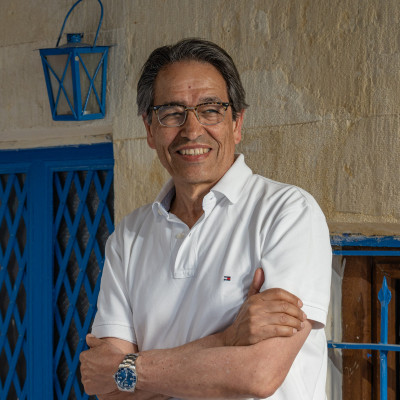by El Filósofo
Published the 14th of January 2021
The spring of 2013 was particularly wet in the community of Madrid. That's why the dandelion, abundant in the national park of the Sierra de Guadarrama, was especially large this year. And that's why I spent many days out in the rain with my macro lens.
Canon 400D . Canon 100mm macro f/2.8 . f/7.1
This particular image was taken on a rainy afternoon. The rain had stopped for a few minutes and the sun slightly peeked through the clouds, so in that moment I had good light. I made several shots with different focus and depth of field. It was windy and the seed heads were moving, so it was hard to use focus stacking. I even had to lower the shutter speed in order to use a smaller aperture and increase the depth of field so that I could get enough detail in the seeds heads. Finally I was able to attempt focus stacking, working as quickly as possible during a moment when there was no wind. This image was made with four shots that were later stacked in post-processing.
"An image portraying this type of abstraction has to be well made with a main focus point, as we see in the foreground seed head on the right."
For me the result was quite satisfactory. An image portraying this type of abstraction has to be well made with a main focus point, as we see in the foreground seed head on the right. The series of lines with sharp droplets radiate from the center and reveal an entire universe on a macro level.
I made some basic adjustments in Adobe Camera Raw, and then I exported the four images to Photoshop to merge them and make the final adjustments.
1) I opened the four photos in Camera Raw and edited them very slightly to give some sharpness and contrast.
2) Then I exported the four pictures in Photoshop and went to File > Automate > Photomerge (Figure 1). When the first stack was done, I selected all generated layers and went to Edit/Auto-Blend Layers (Figure 2), checking the stack images (Figure 3).

Figure 1.
Figure 2.

Figure 3.

Figure 4.

Figure 5.

Figure 6
6) Finally, I sharpened the image with the Unsharp Mask filter, Amount set to +42.
Taking photos like this one can be a bit tricky. In a session of a few hours, I can shoot a hundred photos that may contain one or two acceptable images. The result depends on many factors:
1) There should be raindrops on the seed heads, but not too much so that the flowers are completely soaked.
2) If you want to shoot using focus stacking, there can be no wind.
3) Choose young plants that are in full bloom and not yet damaged in any way. Otherwise the symmetry will be lost.
4) Try to have blurred flowers in the background. They produce very attractive tones and will be a great supporting element in your image.
5) Since you are very close to the subject and have to be almost on top of the dandelion, there will be a loss of light. So you have to use a large aperture. You must also use a fast shutter speed in case there is wind or other movement. The dandelion has a very long stem that easily sways in even the tiniest bit of wind. Of course, a large aperture means less depth of field, so if you want a lot of detail in the image you need to use focus stacking — a technique I use only as a last resort. To get a large depth of field, the aperture has to be small and the shutter speed slow. That means that the plant must be absolutely still.
I was born in Madrid, Spain, in 1962. I am professor of philosophy. I was previously dedicated to painting and had several local exhibitions, which influenced my work when I took up nature photography as a hobby. I believe that it is not necessary to go to remote locations when shooting nature photography. You can find all sorts of subjects near your home or even in your own backyard. In my case, I am fortunate to live 6 miles (10 km) from the Sierra de Guadarrama National Park.











